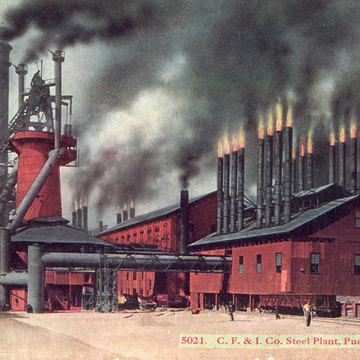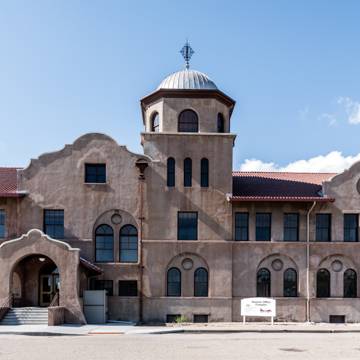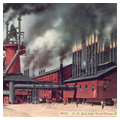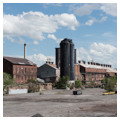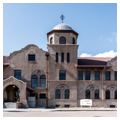CF&I's administrative building (c. 1901) and the dispensary next door feature the curvilinear parapets, stucco walls, and refined details of the Mission Revival. This genteel architectural facade for a tough, dirty business typifies the efforts of company president John C. Osgood. Between 1901 and 1903 Osgood pumped $24 million into building elegant company buildings and expanding and modernizing the steelworks, which grew to include the Guggenheims' giant Pueblo plant. Osgood's improvements are what visitors see today as mostly decaying, abandoned works.
From around 1910 to the 1950s, CF&I was one of the largest steel makers in the West and Colorado's single largest industrial plant. Some 6,000 to 7,000 employees produced as much as 600,000 tons of steel annually, to be made into the rails and barbed wire that tamed the West. CF&I coal mines, limestone quarries, coking plants, and other operations, including many company towns and the model town of Redstone (Pitkin County), reshaped the landscape.

